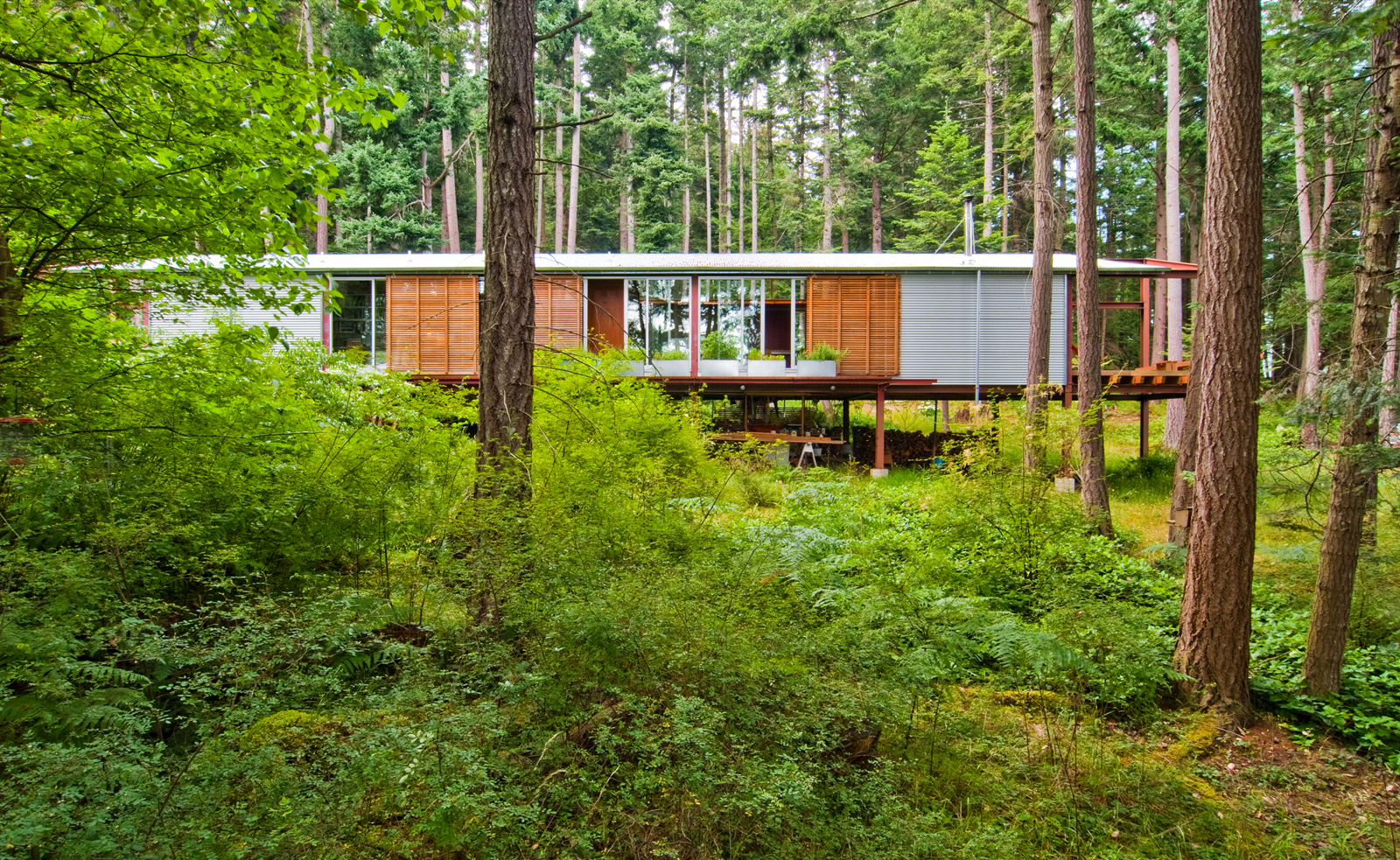
[All images by BUILD LLC]
Recently, we spent a weekend up at one of our favorite houses in the Pacific Northwest. A few hours north and a ferry ride away from Seattle, the Walker-Pope House is perched along a wooded hillside of Orcas Island. It’s a masterpiece of architecture in our opinion and there is a tremendous amount to learn from it. Interestingly enough, as much as it has to teach about design, it has more to teach about life.
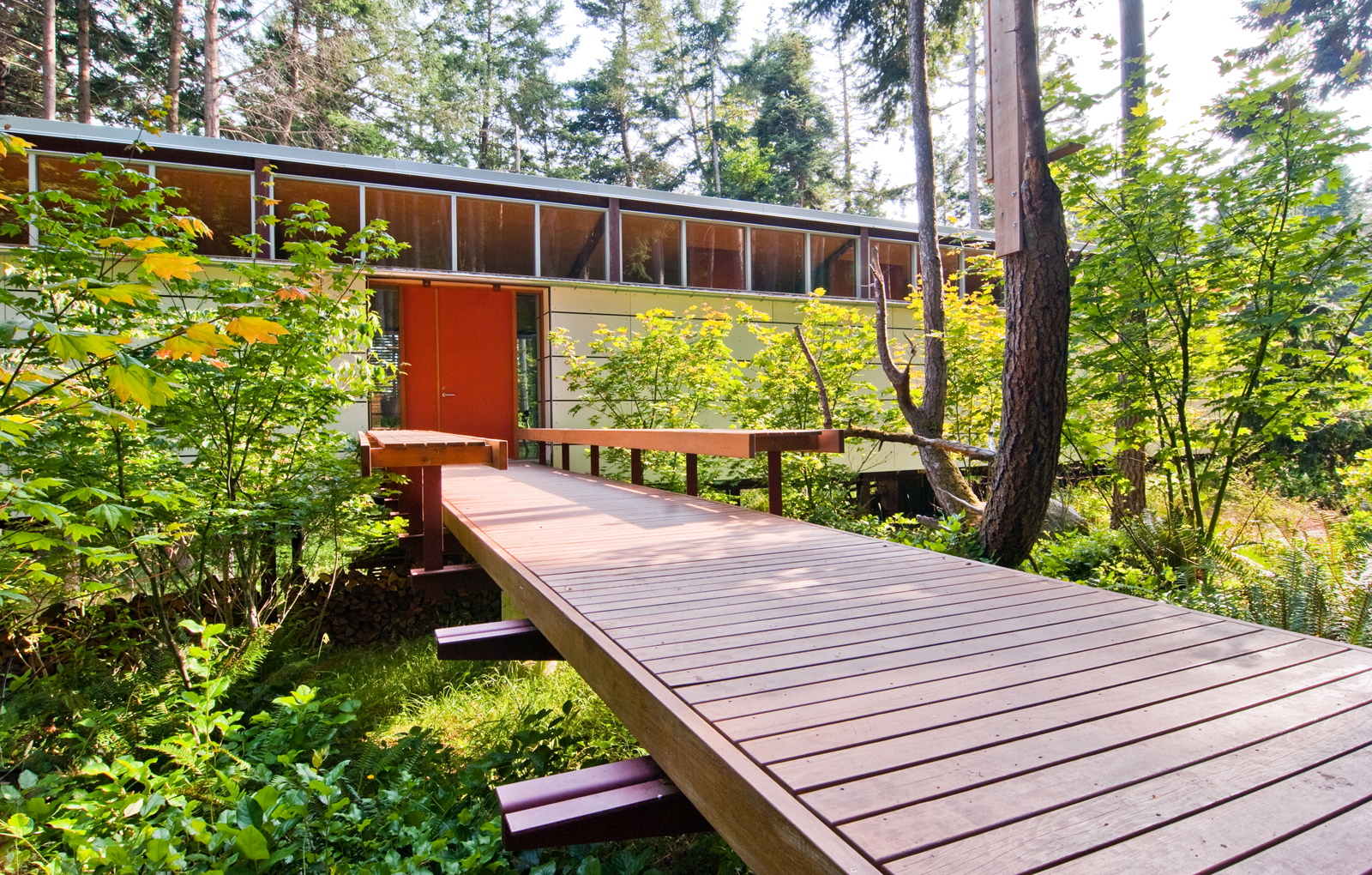
The design of the home speaks to the simplicity that good architecture should embody. Four walls and a shed roof keep the rain out and the heat in, creating an atmosphere of warm shelter. The main wall at the entry extends out in both directions and provides protection for exterior decks at each end. The opposite wall opens up to provide a sweeping view of the forest. All of the necessary functions reside within this simple, elegant box, it’s everything it needs to be and nothing more.
The envelope of the house is marked with deliberate articulation, each event unfolding as a sequence of experiences. The warm glow of the delicate clerestory windows leads a visitor to the foot bridge at the entry approach. The footbridge carries its visitors up over the forest floor and offers an intentional peek into a cozy living room beyond. Once inside, floor to ceiling sliding glass walls open up to present the forest beyond. A home doesn’t need a television with a show this spectacular.
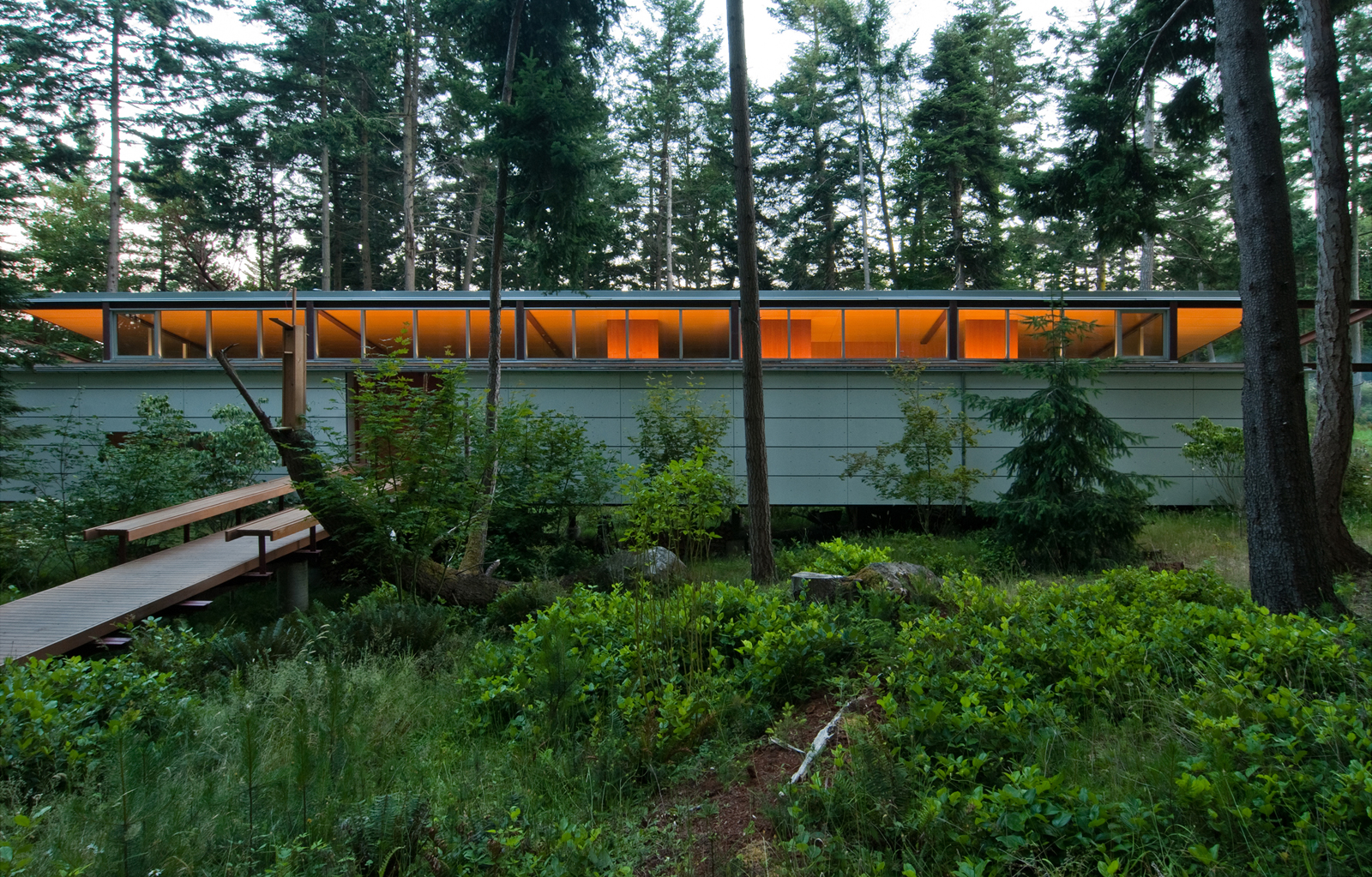
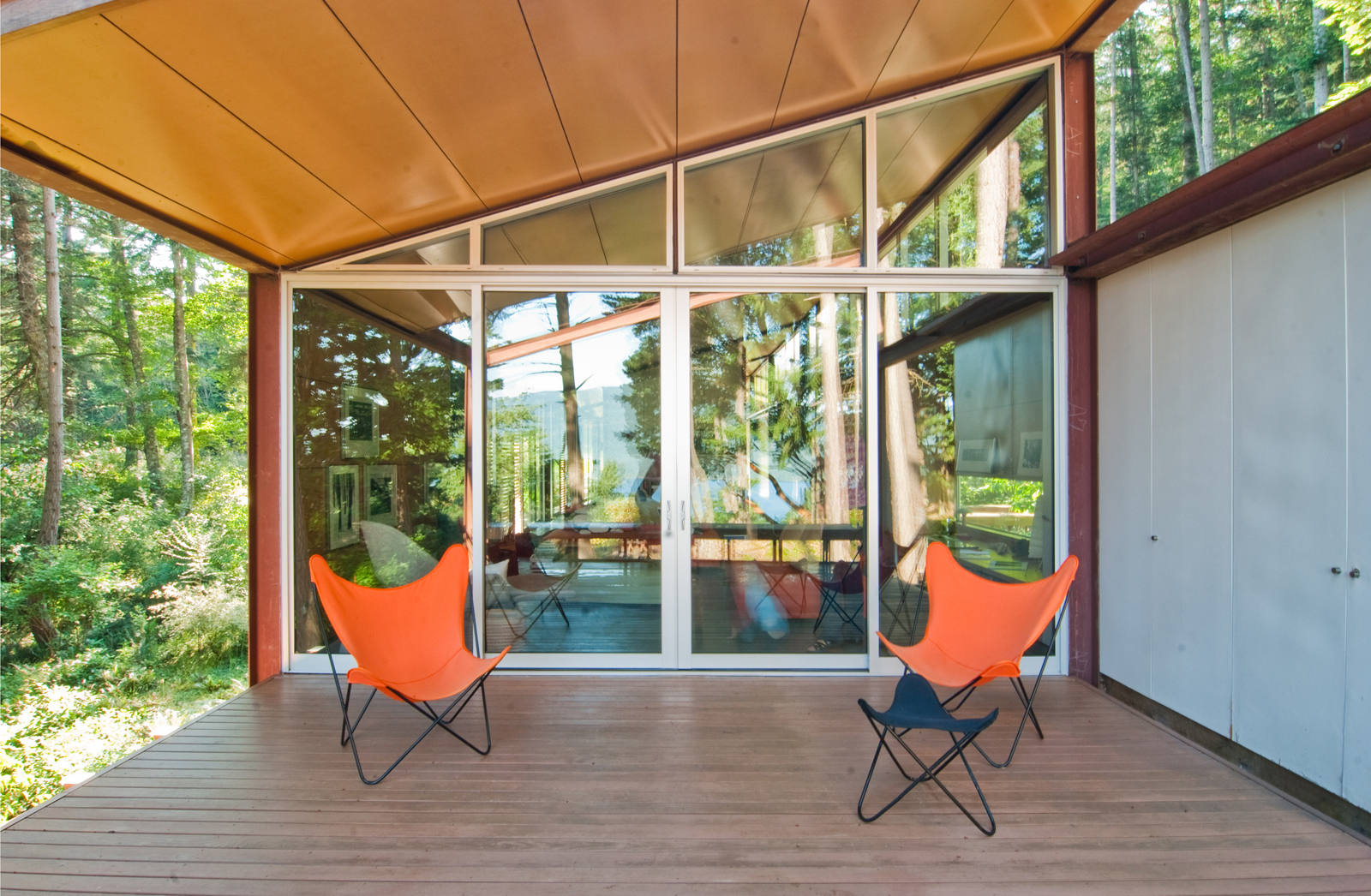
Good design is about creating a quality of life. In this case a deliberate architecture becomes setting for fostering the elements that matter: friends, family, gatherings, food, and sharing. A long table allows for dinner parties to extend long into the evening, the weathered wood of the table telling of dinner parties past. An open living area orbits about a centrally located wood-burning stove. Stacks of books feed the curious mind and relics beg for stories to be told.
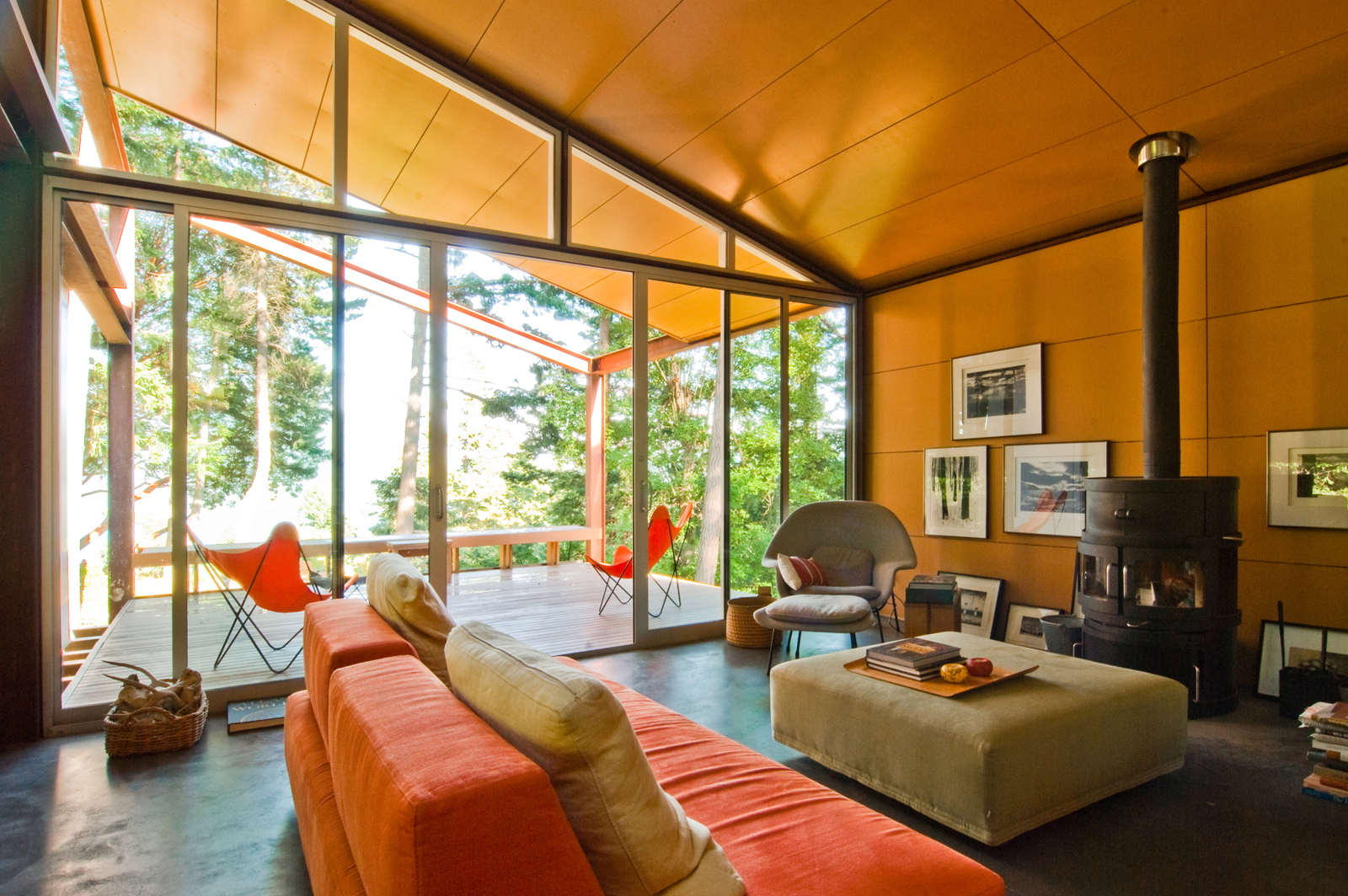
This house belongs exactly where it is. It respects its environment by not attempting to imitate nature nor disappear in it. Instead, the architecture maintains an authenticity about itself and allows the landscape to pass underneath its attenuated steel columns. To the east, the house opens up to a view of the East Sound and Mount Constitution beyond. To the west, the structure lightly touches down, lowering its inhabitants to a quiet meadow.
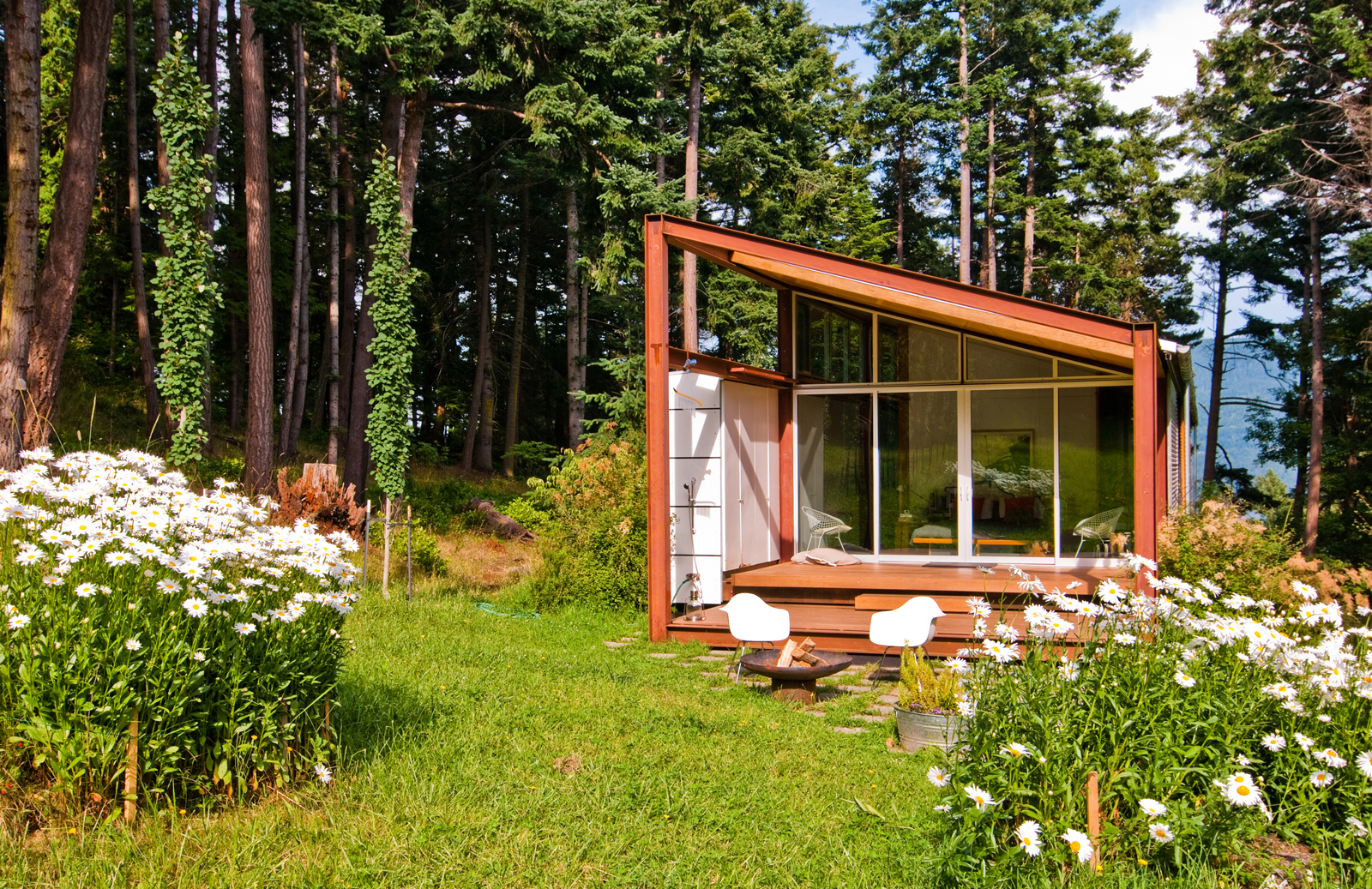
The proportions of the home are based on a steel frame skeleton system. Each of the 8 frames were fabricated off-site and engineered to fit perfectly on the back of a flat-bed delivery truck. Once the pier footings were in place, the frames were delivered to the site and lifted into place. This method allowed the structure to be cost-effective, sensible and methodical. It is timeless innovation like this that makes all of the bells and whistles of most homes seem trivial and faddish.
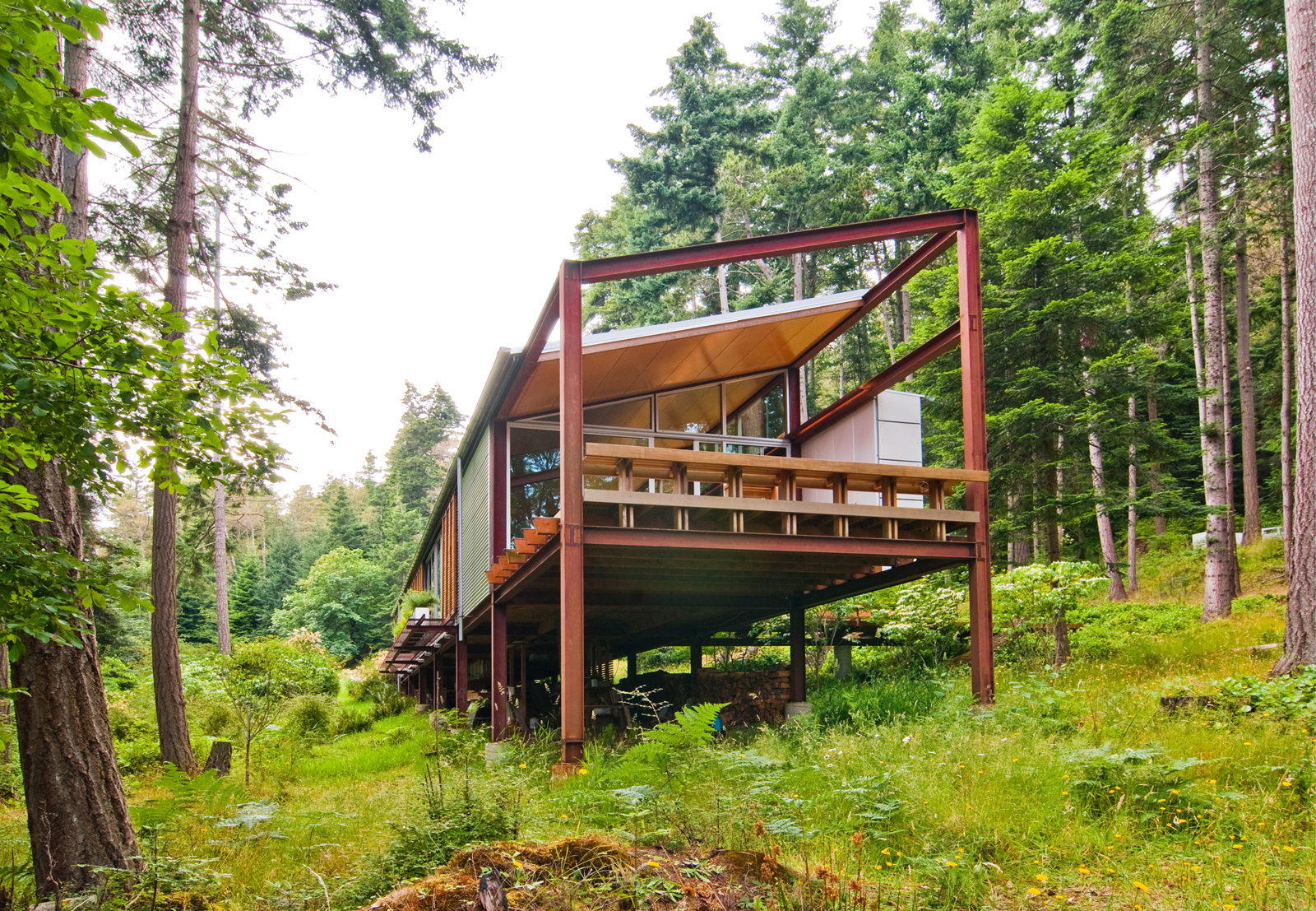
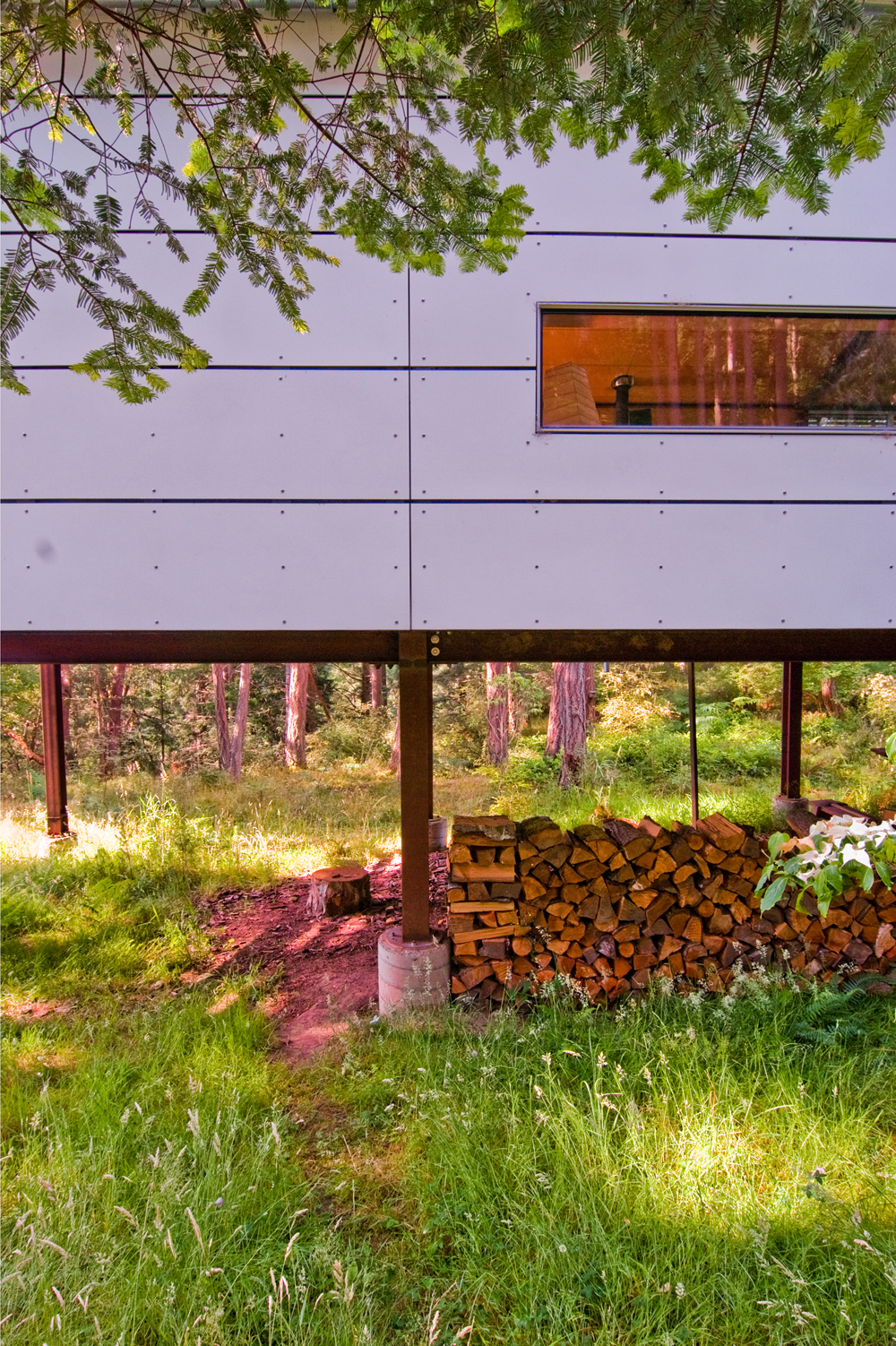
Houses are for people and living and possibility. When we shed all of the cultural baggage of what a house is supposed to be and how it is supposed to look, we get very different results; and when a master architect takes the helm of this paradigm shift the result is extraordinary architectures. At this home, Gordon Walker and Sandie Pope stand at the helm. Their work here is about much more than design and architecture; it conveys culture, humanness and heart.
Like any good meal, we saved dessert for last. Tucked back in the woods behind the Walker-Pope House is a permanent tent structure for guests. It offers shelter from the rain and sun without compromising a connection with the forest. The structure hovers above the forest floor and lets in the sounds of the wind and the chirping birds. Wake up quietly enough and you might spy the morning wildlife moving about its day.
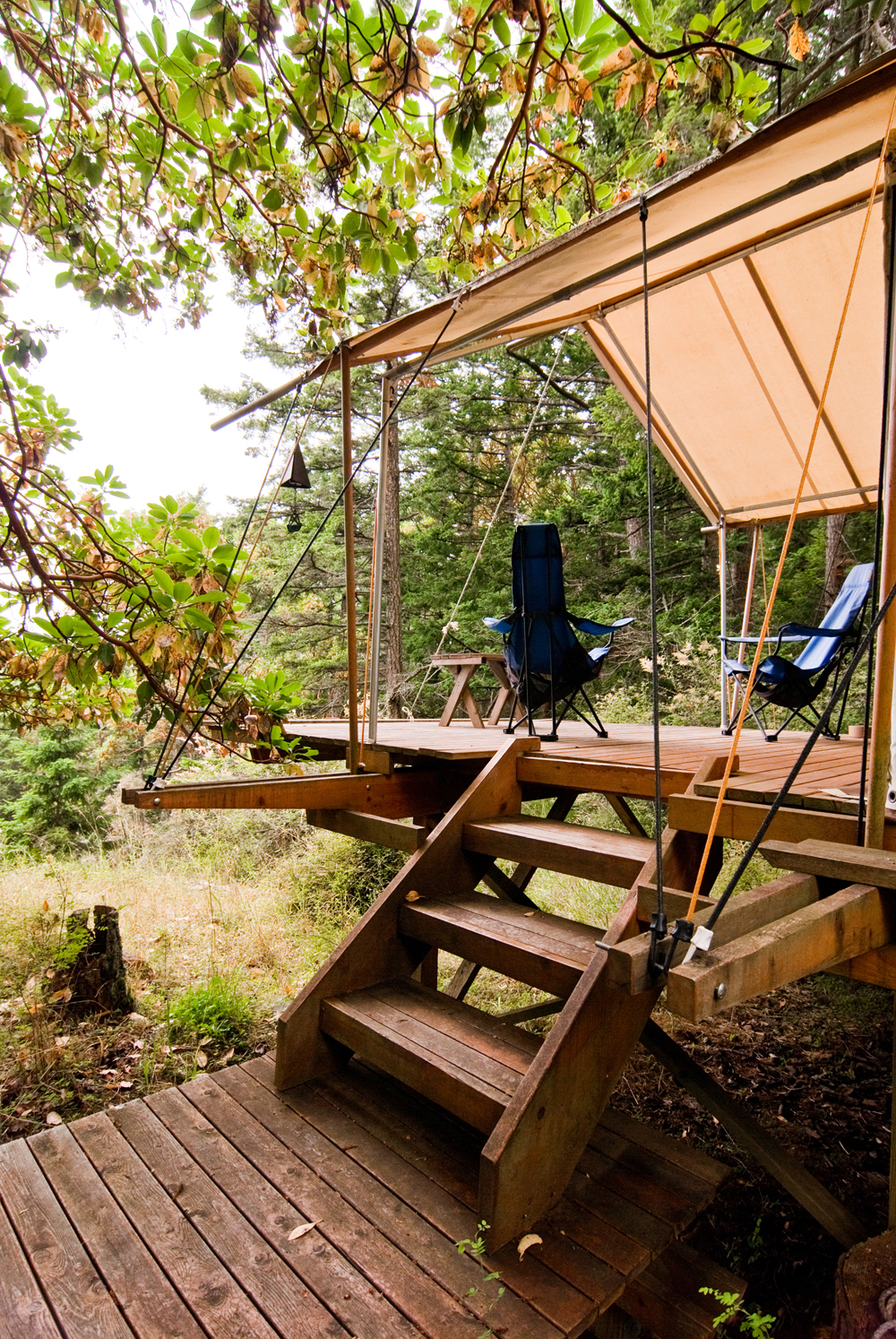
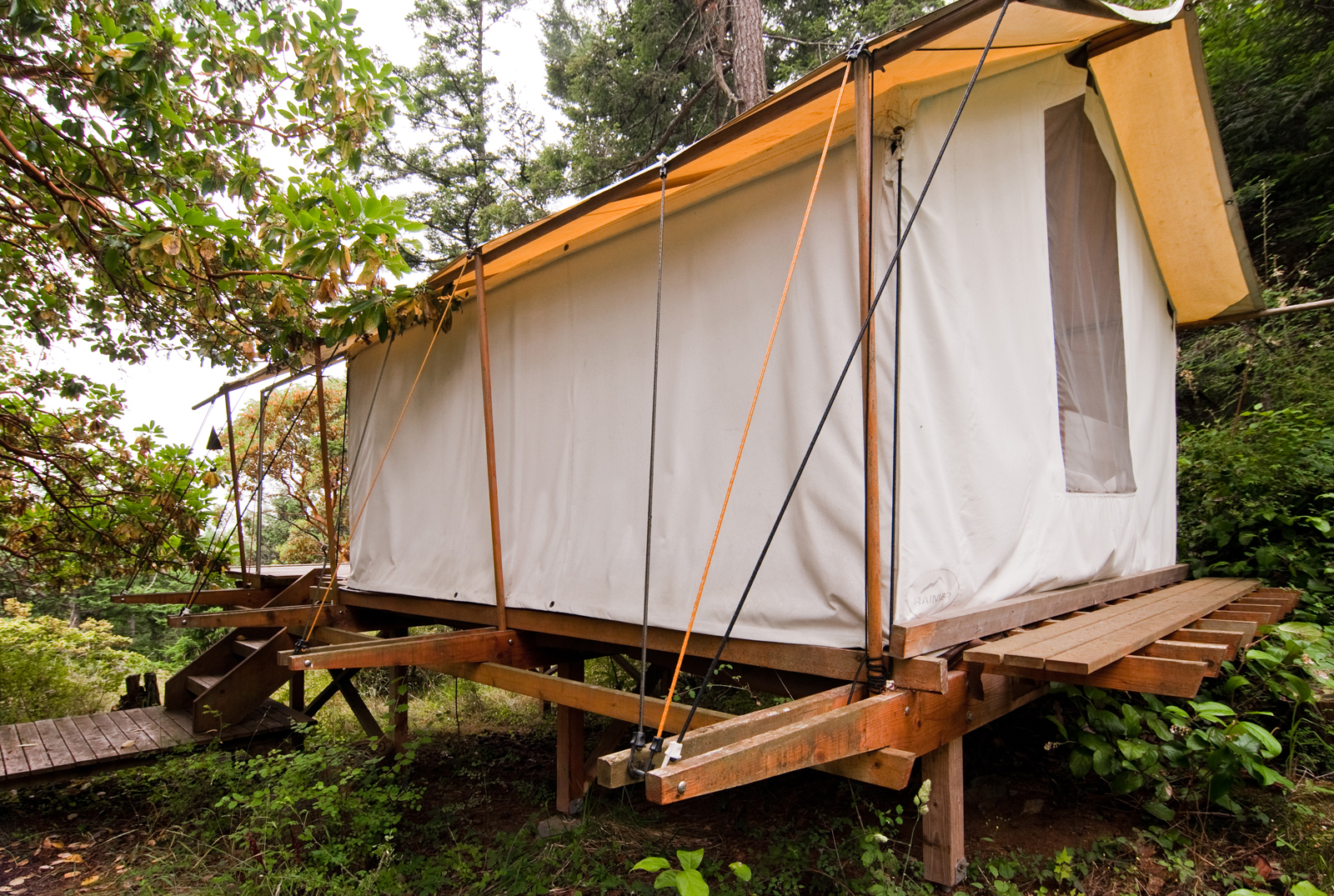
For more reading on the Walker-Pope house, check out Rebecca Teagarden’s article in the Seattle Times from last fall.
Cheers from team BUILD





